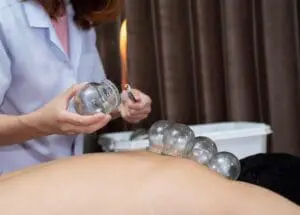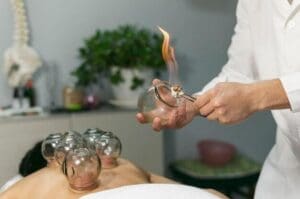Understanding acupuncture as potential migraine treatment option
When traditional medicine hasn’t helped ease your migraine pain, many migraine patients are eager to explore other methods of treatment. Acupuncture was developed in ancient China, and involves piercing specific areas of the body with a needle to alleviate pain. According to the Chinese practice, there are 14 meridians along the body, and if there is a disturbance of energy along these meridians, pain or illness can ensue. While there is plenty of research, acupuncture has mixed reviews in the migraine community. Here’s what we think people with migraine need to know about acupuncture before scheduling a consultation with a specialist.
Based on a recent systematic review of 22 clinical trials involving 4985 people, there is evidence that acupuncture reduces the frequency of headache in individuals with migraine, and that the effect may be similar to that observed with preventive medications. The frequency of headache is dropped by 50% or more in up to 59% of individuals receiving acupuncture and this effect can persist for more than 6 months.
How it works
__
Acupuncture is meant to keep the energy flow (called “qi”) balanced along the meridians. An acupuncturist will place needles at specific pressure points, usually along a person’s back or neck where they can slow pain transmission. Sometimes, a gentle head massage accompanies the placement of the needles. Treatment takes about an hour, and patients are advised to undergo at least six sessions, usually once a week. The acupuncturist may also suggest dietary changes. For example: Caffeine can exacerbate migraine, and some acupuncturists believe it disrupts the flow of the body.
It’s not completely clear how acupuncture eases pain or decreases migraine. The overarching belief is that it activates pathways in the brain that are responsible for turning pain off.
Patient Experiences
__**
As is the case with most migraine treatments, acupuncture patients have experienced mixed success. Jane Elliot, a BBC news reporter who thought nothing could cure her migraine, had huge success and is now migraine free. Here’s what some followers in our Move Against Migraine Facebook group had to say about their experience with acupuncture:
“I use acupuncture and find that it’s a useful tool. Don’t expect it to be a miracle or take all of your pain away, but I think it does knock down my pain level a bit when I go regularly.” -Sara
“It worked for my neck pain but it wasn’t as effective for my migraine. You should try it, it might help you.” -Judy
“For me, regular acupuncture is an essential part of my migraine management. It helped me remit from chronic migraine and medication overuse many years ago and keeps me at infrequent episodic attacks today . When I first started treatments, it took a while to see any effect but patience and persistence paid off.” -Sharron
“I did 10 sessions and felt very relaxed after, but no impact on migraine.” -Mary
Overall, the American Migraine Foundation agrees with the conclusion that a course of Acupuncture of at least six treatment sessions can be a valuable treatment option for those individuals willing to undergo the procedure. However, long-term effectiveness beyond one year is uncertain and requires further research. If you are interested in learning more about acupuncture for migraine, please visit the resource library on our website.


